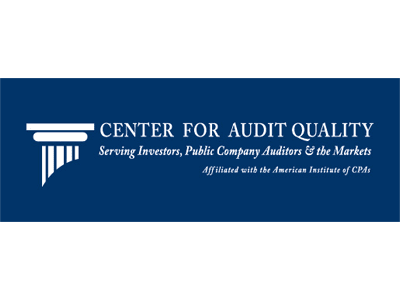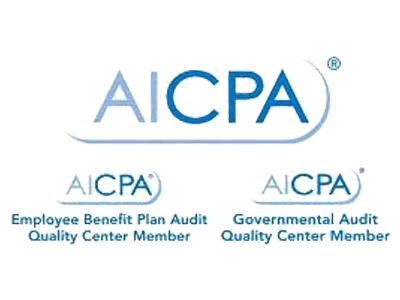On July 4, 2025, President Trump signed into law the One Big Beautiful Bill Act (H.R. 1) Public Law No: 119-21 or, informally known as the OBBB Act. The Act is comprehensive and includes key changes to business-related provisions and incentives. Navigating these changes will be complex, but understanding them is essential for effective tax planning and optimizing your position.
We encourage you to review this list, which highlights some of the key provisions, and contact us at your earliest convenience to discuss the impact of these changes and develop a plan tailored to your situation.
- Qualified Business Income (QBI) Deduction: The Act makes this deduction permanent. It also sets a minimum deduction for active QBI for “applicable taxpayers” at $400; defines an applicable taxpayer as one whose aggregate QBI for all active qualified trades or businesses for the tax year is at least $1,000; and establishes inflation adjustments for the new minimums starting in post-2026 tax years. Also, the phase-in amounts are increased from $50,000 to $75,000 for single filers and from $100,000 to $150,000 for joint filers.
- Bonus Depreciation: The Act makes additional first-year (bonus) depreciation for certain qualified property permanent at 100% (under prior law, it was to phase out to zero ). This provision is effective for property acquired after Jan. 19, 2025. There is also a new 100% bonus depreciation provision for “qualified production property” (QPP, which is certain non-residential real property used in the manufacturing, production or refining of certain tangible personal property). This QPP provision is effective for property placed in service after July 4, 2025.
- 179 Expensing Limits: For property placed in service after 2024, the Code Sec. 179 expensing limits are increased to $2,500,000 and the phasedown threshold is increased to $4,000,000 (both subject to inflation adjustments).
- Business Interest: For post-2025 tax years, the Act modifies the definition of adjusted taxable income for purposes of the Code Sec. 163(j) limitation on business interest.
- Deduction Limitation for Compensation of Publicly Held Corporation Executives: Under the Act, determining compensation that is subject to Code Sec. 162(m) , which limits the amounts that publicly held corporations may deduct for compensation of certain top executives to $1 million per year, is expanded for post-2025 tax years to include all members of a publicly-held corporation’s controlled group and affiliated service group under Code Sec. 414(b) , Code Sec. 414(c) , Code Sec. 414(m) , Code Sec. 414(o) (which is a broader group than under the pre-Act aggregation rule).
- Foreign Tax Credit (FTC)-Allocation of Deductions to Foreign Source Net CFC Tested Income (Formerly Known as GILTI): The Act, which renames GILTI to net CFC tested income, limits the deductions that may be allocated to income in the net CFC tested income category to (i) the deduction for net CFC tested income itself as well as for taxes imposed on that income and (ii) any other deductions directly allocable to net CFC tested income. Also, no amount of interest expense or R&E expense may be allocated to this category. Deductions which would have been allocated to the net CFC tested income category but for this provision must instead be allocated to U.S. source taxable income for purposes of the FTC limitation. This provision is effective for tax years beginning after 2025.
- Exclusion of Gain on the Sale or Exchange of Qualified Small Business Stock (QSBS): The Act provides that gain on the “applicable percentage” (50% for stock held for 3 years, 75% for stock held for 4 years, 100% for stock held for 5 years) is eliminated for QSBS acquired after July 4, 2025. Also, the gain exclusion threshold is increased from $10 million to $15 million and the $50 million aggregate gross asset limit is increased to $75 million (subject to inflation adjustments).
- Enhanced Manufacturing Investment Credit: The advanced manufacturing investment credit (also known as the semiconductor credit or the CHIPS credit) on qualified investments in an advanced manufacturing facility built before Jan. 1, 2027 is increased to 35% (up from 25%) for property placed in service after 2025.
- Information Reporting, Form 1099-K: The Act retroactively reverts the Form 1099-K reporting threshold back to the pre-ARPA $20,000 and 200 transactions threshold.
- Information Reporting, Forms 1099-NEC, 1099-MISC: For payments made after 2025, the reporting thresholds for Forms 1099-NEC and 1099-MISC are increased from $600 to $2,000 (adjusted for inflation after 2026).
- Gain on the Sale of Certain Farmland Property: For sales or exchanges occurring after July 4, 2025, sellers of qualified farmland property may elect to pay capital gains tax on the sale in four equal annual installments. The first payment is due with the return for the year in which the sale occurs, with the remaining payments being due with the successive years’ returns (but if a payment is missed, the balance is due immediately).
- Corporate Charitable Contributions: The Act imposes a new 1% floor (in addition to the 10% ceiling) on corporate charitable deductions for post-2025 tax years.
- Excess Business Losses: The Act makes the Code Sec. 461(l) limit on excess business losses permanent.
- Energy Efficient Commercial Buildings Deduction: Under the Act, the energy efficient commercial building deduction terminates for the cost of energy efficient commercial building property whose construction begins after June 30, 2026.
- Cost Recovery for Energy Property: The Act eliminates 5-year MACRS classification for energy property effective for property for which construction begins after 2024.
- Advanced Energy Project Credit: Effective July 4, 2025, “add backs” in the event of the revocation of a project certification are discontinued.
- Advanced Manufacturing Production Credit: The Act terminates the credit for wind energy components produced and sold after Dec. 31, 2027. It also subjects pre-Act applicable critical minerals to a new phaseout schedule and tightens the rules regarding foreign entities.
- Energy Efficient Home Improvement and New Energy Efficient Home Credits: The energy efficient home improvement credit under Code Sec. 25C is terminated for property placed in service after 2025. The new energy efficient home credit under Code Sec. 45L terminates for any qualified new energy efficient home acquired after June 30, 2026.
- Clean Vehicle Credits: The credits for new and previously owned clean vehicles terminate for vehicles acquired after Sept. 30, 2025. The credit for qualified commercial clean vehicles also terminates for vehicles acquired after Sept. 30, 2025.
- Alternative Fuel Vehicle Refueling Property Credits: The credit for “alternative fuel vehicle refueling property” (such as an EV charger) terminates for property placed in service after June 30, 2026.
- Employee Retention Tax Credit (ERTC): Although an eligible employer was potentially entitled to claim a COVID-related ERTC until April 15, 2025, the Act prohibits IRS from issuing any ERTC refunds after July 4, 2025 (unless the taxpayer had filed the refund or credit claim before Jan. 31, 2024). The Act also adds a new $1,000 penalty on a “COVID-ERTC promoter” who aids or advises on COVID-ERTC documents without meeting due diligence requirements when determining eligibility for, or the amount of, a credit or advance payment under Code Sec. 3134 (the penalty is $1,000 per violation).
- Tips: The Act adds a new deduction of up to $25,000 for “qualified tips,” subject to phaseout for a taxpayer with MAGI exceeding $150,000 ($300,000 for joint filers). However, tips from certain specified service trades or businesses don’t qualify; no deduction is allowed unless the taxpayer includes a SSN on the applicable return; and other rules apply. Also, IRS is required to publish a list of occupations that customarily receive tips (including occupations that customarily and regularly received tips before 2025). IRS is also required to adjust withholding procedures to reflect the new deduction starting in 2026 (reporting entities may use reasonable methods to approximate designated tip amounts during the transition period). The deduction is set to expire after 2028.
- Overtime: The Act also adds a new deduction of up to $12,500 ($25,000 for joint filers) for “qualified overtime compensation,” subject to phaseout for a taxpayer with MAGI exceeding $150,000 ($300,000 for joint filers). Qualified overtime compensation is defined by reference to the Fair Labor Standards Act (and doesn’t include qualified tips). Similar to the new tips deduction, no overtime deduction is allowed unless the taxpayer includes a SSN on the applicable return and the deduction is set to expire after 2028. Also, IRS is required to update withholding procedures beginning in 2026 to reflect the new deduction.
- Paid Family and Medical Leave Credit: The Act makes this credit permanent. Also, under the Act, employers will choose between two methods for calculating the credit: the applicable percentage of the amount of wages paid to qualifying employees for any period in which the employees are on family and medical leave, or the applicable percentage of premiums paid or incurred by an employer for an insurance policy that provides paid family and medical leave (in other words, an employer chooses to take the credit based on wages paid or premiums paid). Other changes include that, at the election of the employer, an eligible employee can be one who has been employed by the employer for not less than six months, rather than one year. The changes under this provision apply to tax years after 2025.
- Employer-Provided Child Care Credit: Effective 2026, the Act enhances the employer-provided child care credit by increasing the credit percentage for “qualified child care expenditures” from 25% to 40% for regular businesses, 50% for eligible small businesses. The maximum credit is $500,000 ($600,000 for eligible small businesses), subject to annual inflation adjustments beginning in 2027.
- Employee Exclusion for Employer Payments of Student Loans: The Act makes permanent the employee exclusion for qualifying employer payments of student loans. Also, the Act provides an inflation adjustment to the statutory maximum exclusion amount ($5,250) for tax years beginning after 2026.
- Dependent Care Assistance Programs: The Act increases the annual tax-free limit for amounts paid or incurred by an employer pursuant to a dependent care assistance program to $7,500 ($3,750 for a married individual filing separately). This provision is effective for tax years beginning after 2025.
- Information Reporting, Forms 1099-NEC and 1099-MISC: For payments made after 2025, the reporting thresholds for Forms 1099-NEC and 1099-MISC are increased from $600 to $2,000 (adjusted for inflation after 2026). There is also a conforming change for backup withholding.
As noted above, these are just some of the changes in the Act. Please call to discuss specific provisions impacting your business and develop a plan tailored to your situation.







